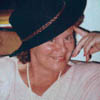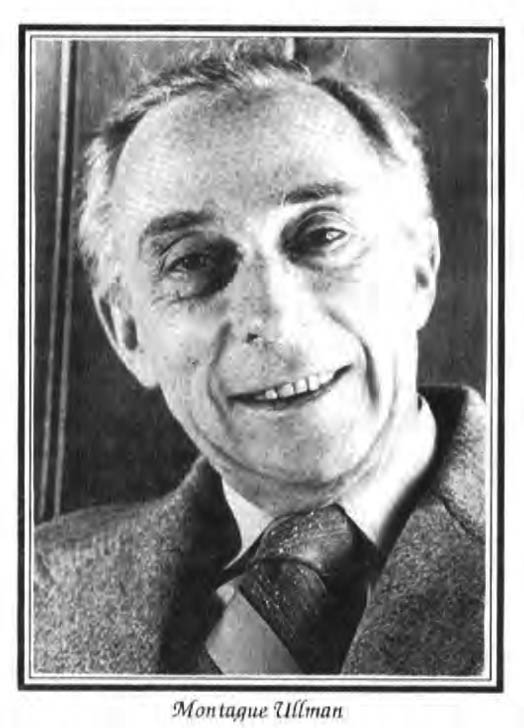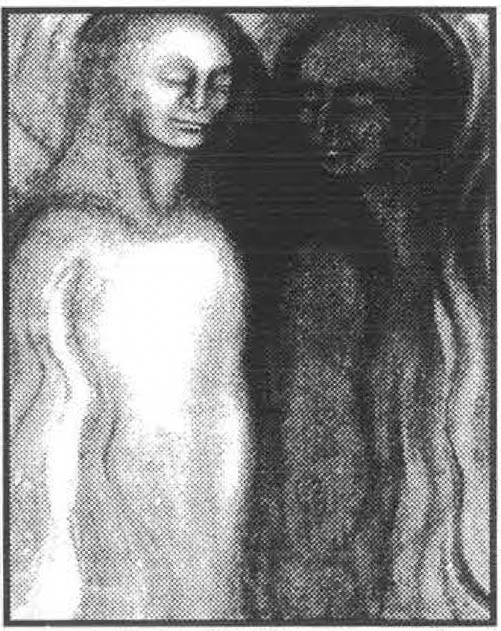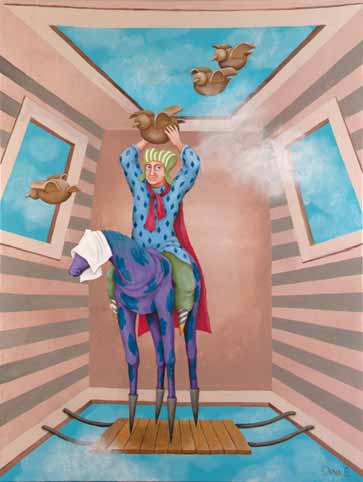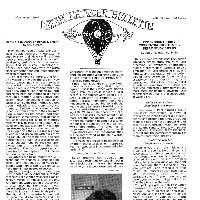Just as Sir Thomas More struggled against the demands of King Henry VIII, as depicted in the film, A Man for all Seasons (Bolt, 1960), many humans are trapped by the unbending structures built around the ordered and predictable seasons of their lives. The worlds, within which many of us live—especially in the Western tradition—are filled with what we accept as unalterable rules and most of us not only live by those rules, but die by them as well. Stanley Krippner (2002) points out that, “our culture consistently erects boundaries, constructs borders, and divides the world into neat (and sometimes overly meticulous) categories that allow us to go about our business in a more or less orderly way” (p. 34). And rarely in the tight constructions of those bounded worlds do we find people who understand that there is something very real, perhaps even more real, that exists beyond the rigid constructs of what we mistakenly identify as the real world.
The accepted world filled with verifiable and testable structures—the empirical world that is seen, touched, heard, tasted, and smelled—moves, we assume, in predictable patterns that build the ordered seasons of our lives, until some unusual experience challenges the structures. And, perhaps, for the first time in our lives, we have an opportunity to decide what world we are willing to embrace. We can embrace the unusual experience and allow for the possibility of a much broader, more limitless world or reject the experience and continue to live…and die…within our comforting, yet often uncomfortable limitations.
Stanley Krippner is one of those rare persons who—from a very early age—knew that there were worlds beyond this one and has spent his life studying and teaching about these worlds so that others could learn to glimpse into the more limitless realities that he first observed when he was so very young. In an email correspondence, Stanley explained to me about his early interest in these other worlds:
“As a child I spent a great deal of time reading. I lived on a farm in Wisconsin. There were very few people my age in the neighborhood, and my sister was much younger than I was. Once my parents taught me how to read (before attending school), I devoured anything and everything around the house. Of special interest was a set of books my grandparents had owned. They were kept in the attic. They contained mythological tales from all over the world, and this stimulated my interest in mythology. Many of these myths, legends, and folk tales involved dreams. So I began to start my own dream diary. I continued this on and off through junior high school, senior high school, and college. Once I began graduate school, I kept writing down my dreams continuously and now have a collection of several thousand…. My grandparents' set of books contained many examples of extraordinary dreams — those about the future, about past lives, about visitations by angels or spirits, etc. So my interest in PSI and in dreams goes back to those old books. What would I have done without them? But PSI and dreams later became a part of my personal experience, and so there was never a “disconnect” between what I read and what I experienced.”
When Stanley was about eight years old, he dreamed one of those pivotal and life-altering dreams that opened the door to what was to become his life’s path, as well as his gift to the world. He shared with me that dream.
“I dreamed that I was outside our farm, looking up at the sky. Suddenly the sky opened up and I could see an entire cosmos beyond what was ordinarily visible. The second world was made up of pastel colors, complex casual-like forms, intricate, but harmonious. The message to me was that there was more to life and the universe than is available to our ordinary ways of perceiving reality. In other words, there is an everyday, ordinary reality, but, also, a non-ordinary reality lurking just beyond. It requires focus and discipline—or perhaps grace or luck—to glimpse it. Nonetheless, it is there, and we ignore it at our peril.”
In a 2002 article, Dancing with the Trickster: Notes for a Transpersonal Autobiography, Dr. Krippner explains that “unusual experiences are usually omitted from autobiographies, and yet they are often among the most important of one’s life” (p.1), an idea he reflected from the writings of White (1999). Not only are they omitted from autobiographies, but the fact that we still call these experiences “unusual” suggest that we omit them from our personal histories as well. Stanley tells of an experience he had when he was 14 years old. He had been an avid reader from very early on in his life, and in his words, he “desperately wanted a set of encyclopedias,” but his family was unable to afford such a purchase. When his request was denied, he went to his room and began to cry but then realized that a rich uncle would possibly be able to help him. The thought of getting this help shifted the tears to his planning of possible appeals to his uncle. But the 14-year-old’s attention made another major shift.
“Suddenly, I bolted upright in my bed. My psyche swelled and my mind expanded in every direction. I suddenly knew what I was not supposed to know: Uncle Max could not be depended upon because he was dead. At that moment, the telephone rang. My mother answered the phone and, between sobs, told us that my cousin had just called. Uncle Max had taken ill, was rushed to the hospital, and died shortly after his arrival.” (Krippner, 1975, p.1, Krippner, 2002, p.2)
It is possible that many of us, sometime during our childhoods, have had experiences in waking life and in dreams that could have opened our hearts and minds to swelling psyches and expanded minds. But we had no external support or internal framework that could have contained such experiences, so we dismissed them and relegated them to unconscious or subconscious places inside us and went about our world-building that did not allow the experiences—ones that our traditional constructs deemed unacceptable—to have a place.
Stanley made a place for the unusual or exceptional experiences that became a significant part of his life. He dreamed of the death of his father a few days before his passing and the death of a dear friend the day that she actually died (Krippner, 2006). In other dreamtime and experiences in “altered states”, he encountered the unfolding of time where he watched his world constructed by words and numbers disintegrate in a cyclone, and then visited Kublai Kan, experienced being in Versailles with Benjamin Franklin, and finally visited Thomas Jefferson at Monticello. He then found himself:
“…at the White House gazing at a bust of Abraham Lincoln; someone whispered, “The President has been shot,” and Lincoln’s visage was replaced by that of John Kennedy. I did not realize that this tragic vision would be actualized less than two years later.” (Krippner, 2002, pp. 8-9)
For those of us who have had the privilege to work or just “be” with Stanley—students, colleagues, and peers—it is no surprise that he was given a Native American name, Wichasah Washte, which is Lakota Sioux for “Good Man.” It is, also, no surprise that his family name, Krippner, of German heritage, means “crib-maker,” and that his Irish forebears were named Porter, which translates as “doorkeeper.” Stanley Krippner has been the “good man” who has opened the door for so many who first glimpsed through and then entered the new, expanded worlds. He has spent his life providing a safe place—the crib— for those newly born into the grander worlds that he first envisioned when he, himself, was only eight years old. And he has nurtured so many by giving them the support to walk in strength on their own paths beyond the acceptable and limiting worlds of their past.
For those who did not have an attic filled with mind expanding books that might have taught about mythology and dreams, Stanley wrote the books, so that others shelves could be filled with information that would allow the curious and the skeptic alike to choose to look at unusual experiences from a more expansive place. For those who did not have a “good man” in their growing up years, he became the good man—born into a family of good people—whose personal mythology, he acknowledges, includes a “determination to bring…learning, love, and light” into this world. He explained that he has been a man who has done his best:
“…to imitate the Brazilian capoeiristas, connecting with my ‘animal alertness,’ happily dancing, though sometimes clumsily groping my way through life. All the while, I wait for a window of opportunity to make a move on behalf of intelligence, compassion, creativity, integrity, and the other values I hold dear.” (Krippner, 2002, pp. 41-42)
Jeanne Achterberg, Ph.D. and fellow professor of psychology at Saybrook Graduate School, summed up in her own words, what many colleagues have reflected over the years:
“Perhaps unbeknownst to him, Stanley Krippner has been my mentor and role model for decades in matters of scholarship, teaching, and in embodying the essence of human kindness. His open mind and heart are most laudable virtues for a scientist, and his creativity has no bounds. It is a great privilege to be his colleague and friend.”
The most common response from his former students, when asked about his impact on their lives, was that Dr. Stanley Krippner has been their mentor. Many expressed unending gratitude that he gave them the tools to work with their dreams by introducing them to Dr. Montague Ullman’s method of dream appreciation (Sela-Smith, 2000, Ullman, 1996). Many have used this method, as well as many other processes they learned from taking Stanley’s Personal Mythology course at Saybrook, in working with their clients, as well as in presenting workshops that many of his students, now therapists, teachers, and workshop leaders, present all over the country, and world.
There is no question that Stanley Krippner is a man who has led his life as unencumbered as possible by the rigid rules and standard structures that regulate the seasons of many lives. This writer, along with so many others acknowledge that we consider it our good fortune that this Man Beyond the Seasons, who recorded thousands of his dreams from the time he was a child and has written over one thousand articles, books, and book chapters on extraordinary experiences, had the focus and discipline, as well as the grace and luck to bring understanding to the world beyond the ordinary reality. He has gifted us with his discoveries to allow us to build the internal framework to live our lives more expansively, as does he.
References
Bolt, R. (1960) A man for all seasons. http://www.cooper.edu/humanities
Krippner, S. (1975) Song of the siren: A parapsychological odyssey. NY: Harper & Row.
Krippner, S. (2002.). Dancing with the trickster: Notes for a transpersonal autobiography. www.stanleykrippner.com/papers
Krippner, S. (2006). Getting through the grief: After-death communication experiences and their effects on experience. In L. Storm & M. A. Thalbourne (Eds.). The survival of human consciousness: Essays on the possibility of life after death (Chapter 9).
Jefferson, NC: McFarland. Sela-Smith, S. (2000). The Ullman method of dream analysis: Context and content. Dream Network Journal. 19 (1), 36-40, 42.
Ullman, M. (2006). Appreciating Dreams. Cosimo: www.cosimobooks.com.
White, R.A. (1999). How to write an EHE autobiography (3rd Ed.). New Bern, NC. Exceptional Human Experiences Network. The latest version of this piece appears on the Exceptional Human Experiences Network’s website at ehe.org.

